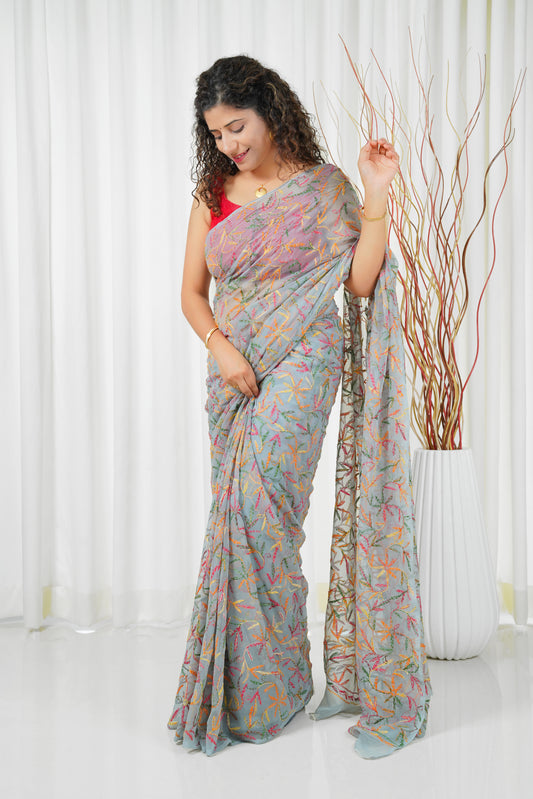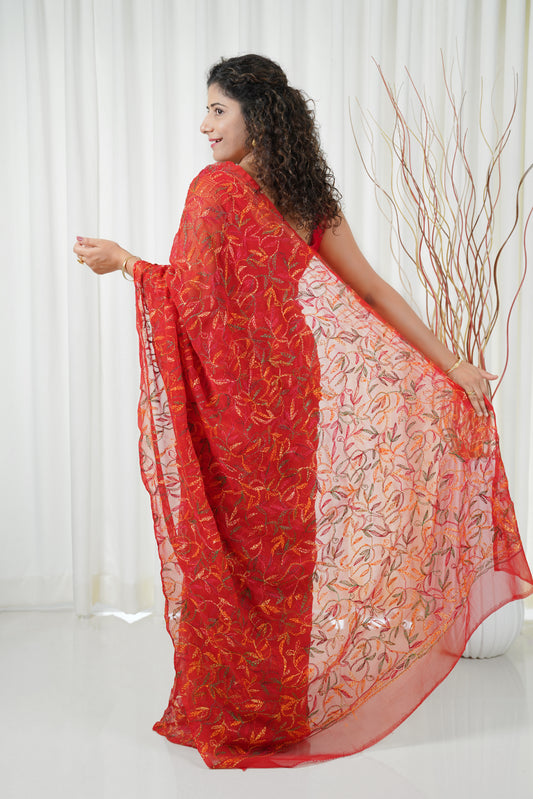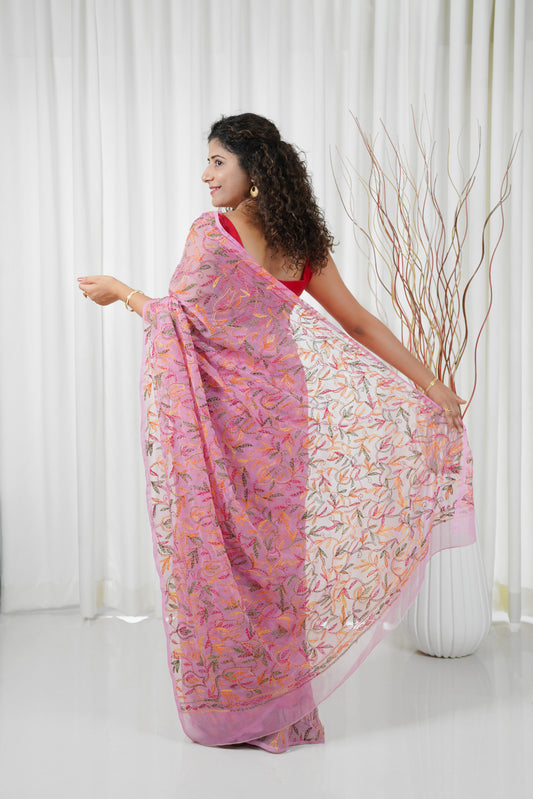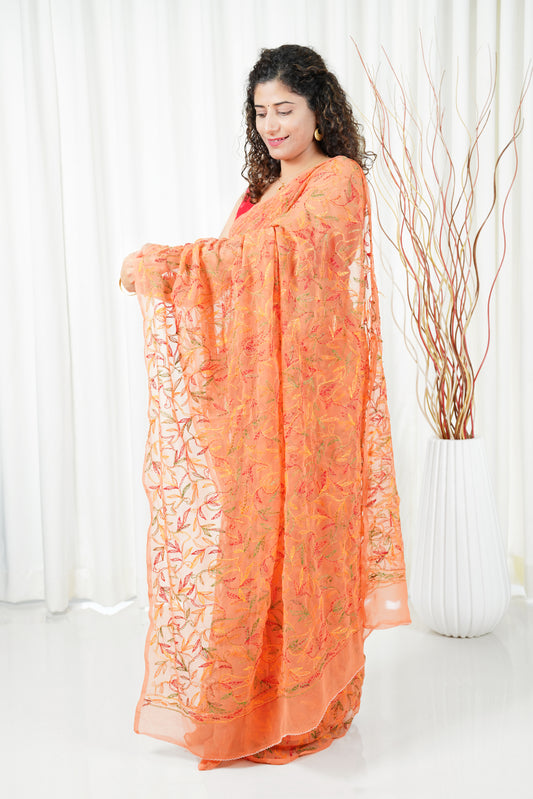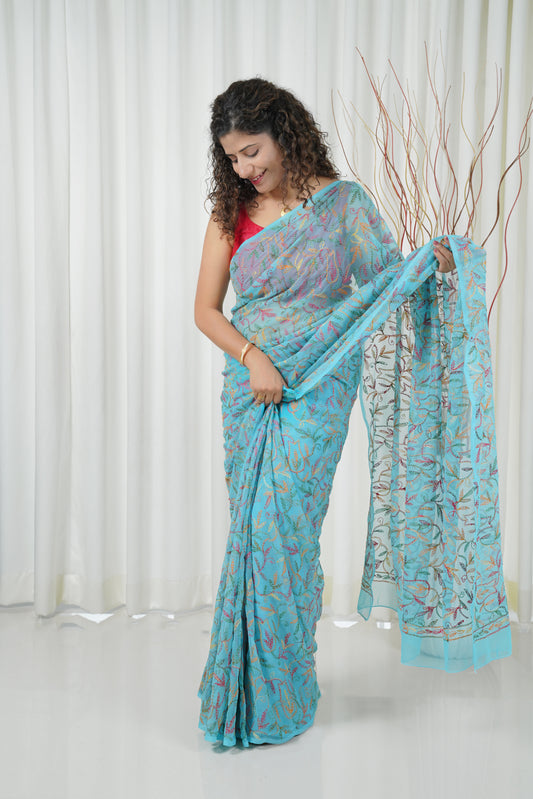Collection: Georgette Chikankaari
Chikankari work, originating from the culturally rich region of Lucknow in India, is a traditional and intricate form of hand-embroidery that has transcended centuries with its timeless elegance. Renowned for its delicate and graceful patterns, Chikankari involves skilled artisans creating beautiful designs on fabric, typically cotton, muslin, or silk. The embroidery is characterized by its use of white thread on light, pastel-colored fabrics, creating a subtle yet striking contrast. The needlework employs a variety of stitches, including the famous shadow work, jali (net) work, tepchi work and phanda (knot) stitch, each contributing to the overall charm of Chikankari.
This art form often showcases motifs inspired by nature, such as florals, birds, and vines, reflecting a seamless blend of aesthetic appeal and cultural symbolism. Chikankari work isn't merely a craft; it's a manifestation of the artisan's skill, patience, and dedication. Passed down through generations, this heritage craft has become synonymous with the finesse and artistry of Indian hand embroidery. Chikankari garments, ranging from sarees and salwar suits to kurtas and dupattas, hold a special place in traditional Indian attire. Beyond clothing, Chikankari has found its way into contemporary fashion, with its timeless beauty adorning everything from scarves and accessories to home furnishings. As a symbol of cultural richness and craftsmanship, Chikankari work continues to be celebrated globally, preserving the legacy of India's textile traditions.

-
Multi Color Thread Tepchi Work Chikankaari Saree-Grey
Regular price Rs. 3,000.00Regular price -
Multi Color Thread Tepchi Work Chikankaari Saree-Red
Regular price Rs. 3,000.00Regular price -
Multi Color Thread Tepchi Work Chikankaari Saree-Pale Pink
Regular price Rs. 3,000.00Regular price -
Multi Color Thread Tepchi Work Chikankaari - Pink
4.0 / 5.0
(1) 1 total reviews
Regular price Rs. 3,000.00Regular price -
Multi Color Thread Tepchi Work Chikankaari - Peachy Pink
4.0 / 5.0
(1) 1 total reviews
Regular price Rs. 3,000.00Regular price -
Multi Color Thread Tepchi Work Chikankaari - Orange
4.0 / 5.0
(1) 1 total reviews
Regular price Rs. 3,000.00Regular price -
Multi Color Thread Tepchi Work Chikankaari Saree-Lavender
Regular price Rs. 3,000.00Regular price -
Multi Color Thread Tepchi Work Chikankaari Saree- White
4.0 / 5.0
(1) 1 total reviews
Regular price Rs. 3,000.00Regular price -
Multi Color Thread Tepchi Work Chikankaari -Sky Blue
4.0 / 5.0
(1) 1 total reviews
Regular price Rs. 3,000.00Regular price -
Multi Color Thread Tepchi Work Chikankaari - Mustard Yellow
4.0 / 5.0
(1) 1 total reviews
Regular price Rs. 3,000.00Regular price



